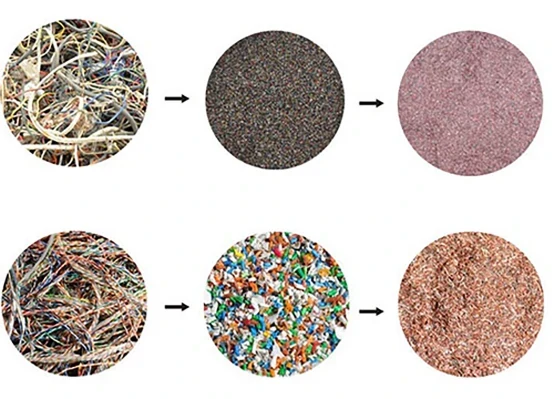

វិច្ឆិកា . 24, 2024 22:09 Back to list
How Metals Are Sorted in Recycling Plants
Recycling is an essential process for conserving natural resources, reducing waste, and minimizing environmental impact. Among the various materials recycled, metals play a crucial role due to their inherent value and recyclability. The sorting of metals in recycling plants is a complex but vital process that ensures efficient recovery and repurposing of these materials. This article explores how metals are sorted in recycling facilities, utilizing a combination of advanced technologies and manual labor.
Understanding the Basics of Metal Recycling
Metals are ubiquitous materials found in a wide array of consumer products, from electronics and appliances to vehicles and construction materials. Recycling metal involves collecting these products, processing them to separate metal from other materials, and then sorting them by type. The primary metals recycled include aluminum, copper, steel, and brass, each requiring specific handling procedures to maximize recovery and quality.
Collection and Initial Processing
The journey of metal recycling begins with collection, where discarded metal products are gathered from various sources, including households, businesses, and industrial sites. Once collected, these metals are transported to recycling plants, where an initial sorting occurs. At this stage, workers manually separate metals from non-metal materials, including plastics, glass, and e-waste components. This step is crucial for ensuring that only metals enter the subsequent processing stages.
Automated Sorting Technologies
After initial sorting, the metals undergo more sophisticated separation methods. Modern recycling plants employ a variety of automated technologies designed to efficiently sort different types of metals. Key technologies include
1. Magnetic Separation This technique is primarily used for ferrous metals (iron and steel). Large magnets are positioned along conveyor belts to attract and separate ferrous materials from non-metallic ones. This process is highly efficient, as iron and steel are prevalent in many products.

2. Eddy Current Separation Non-ferrous metals, such as aluminum and copper, are sorted using eddy current separators. These machines utilize a rotating magnetic field to create eddy currents in conductive metals, propelling them away from other materials. This method is particularly effective for distinguishing aluminum from mixed waste streams.
3. Optical Sorting Advanced optical sorting technology employs high-speed cameras and sensors to identify and separate metals based on their color and composition. This method is particularly useful for sorting different types of non-ferrous metals, enhancing the purity of the recovered materials.
4. Density Separation Some recycling facilities utilize air classification systems or water floatation methods to separate metals based on density. This is particularly useful for mixed metal recycling, where various metal types are present in a single batch.
Manual Sorting and Quality Control
While automation significantly enhances sorting efficiency, manual sorting remains an indispensable part of the process. Skilled workers inspect materials to ensure that the sorting machinery operates optimally and that high-quality metals are produced. This human element is vital for identifying less common metals or contaminants that machines may overlook, thereby improving the overall quality of the recycled output.
Final Processing and Market Preparation
Once sorted, the metals are baled or shredded to prepare them for sale in the recycling market. Each type of metal is typically processed and sold as a distinct commodity, with each having its specific grade and market value. This final step is crucial, as the cleanliness and purity of the sorted metals can significantly affect their market price and demand.
Conclusion
The sorting of metals in recycling plants is a multifaceted process that combines technology and human expertise. Through a series of automated and manual methods, recycling facilities efficiently recover valuable metals from waste, thereby contributing to sustainable practices and resource conservation. As technology continues to advance, the efficiency and effectiveness of metal sorting processes will likely improve, further enhancing the benefits of recycling in our increasingly resource-constrained world.
Latest news
Troubleshooting Common Eddy Separator Problems
NewsJul.04,2025
The Role of Metal Recycling Plants in Circular Economy
NewsJul.04,2025
The Impact of Recycling Line Pickers on Waste Management Costs
NewsJul.04,2025
Safety Features Every Metal Shredder Should Have
NewsJul.04,2025
How Industrial Shredders Improve Waste Management Systems
NewsJul.04,2025
How Cable Granulators Contribute to Sustainable Recycling
NewsJul.04,2025